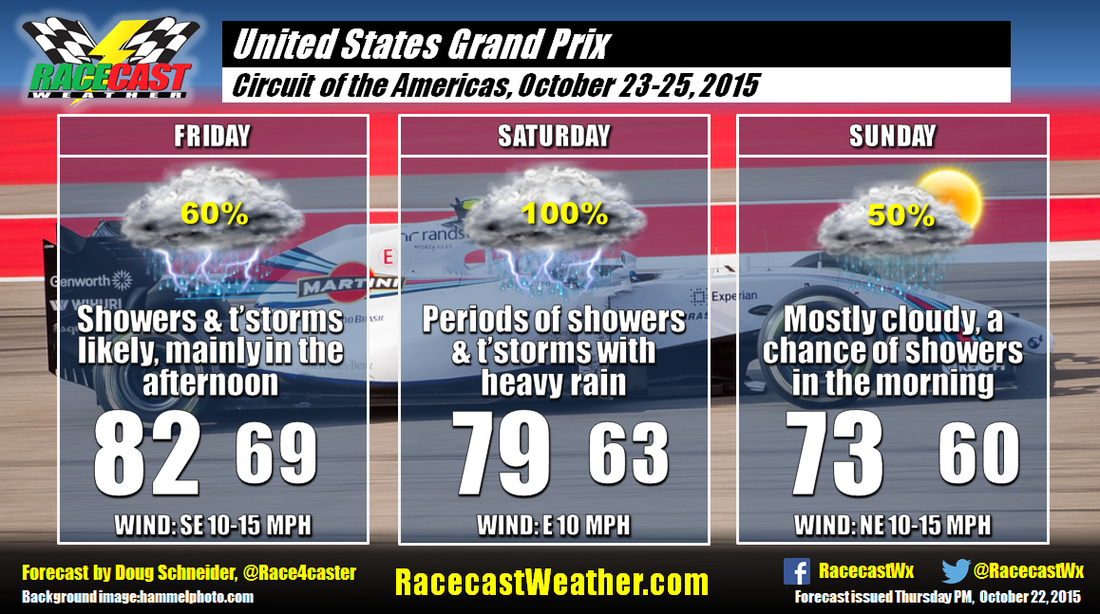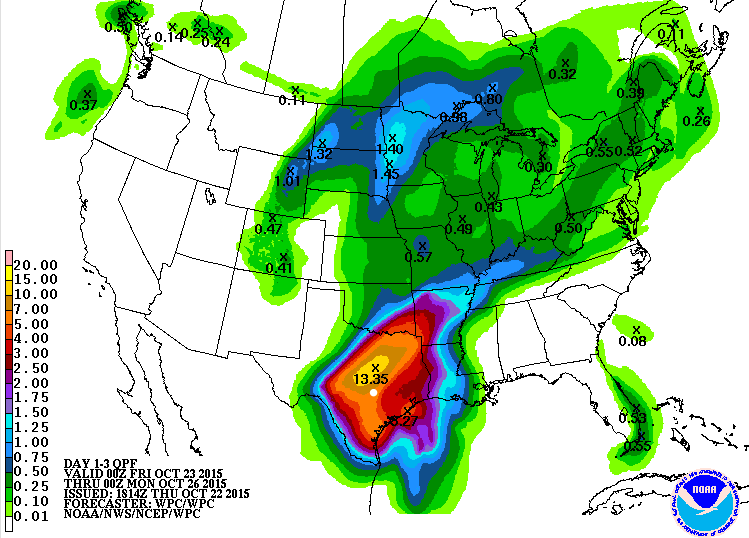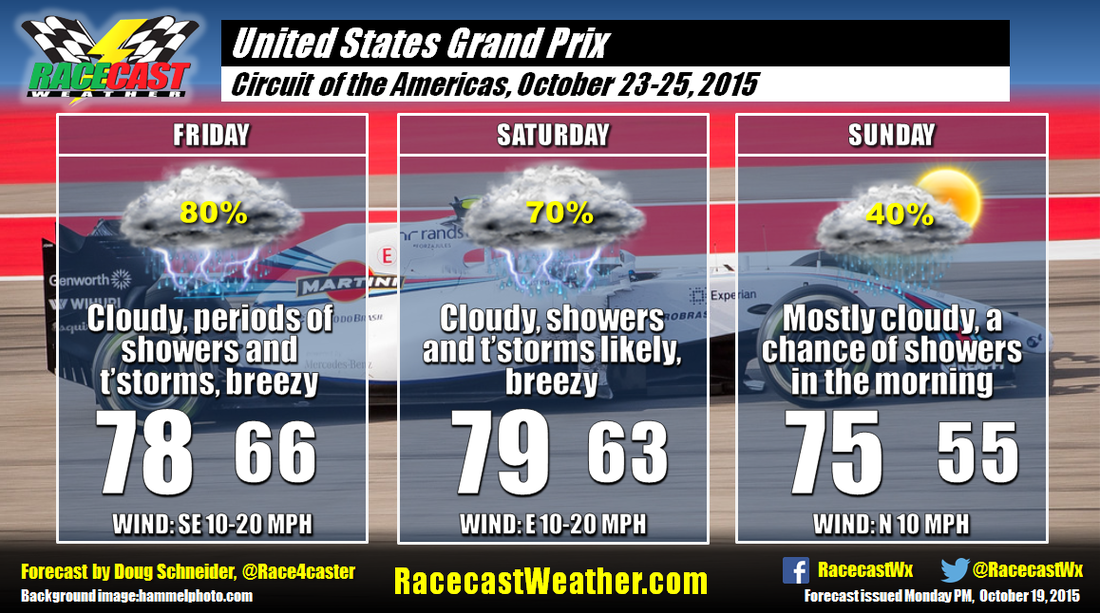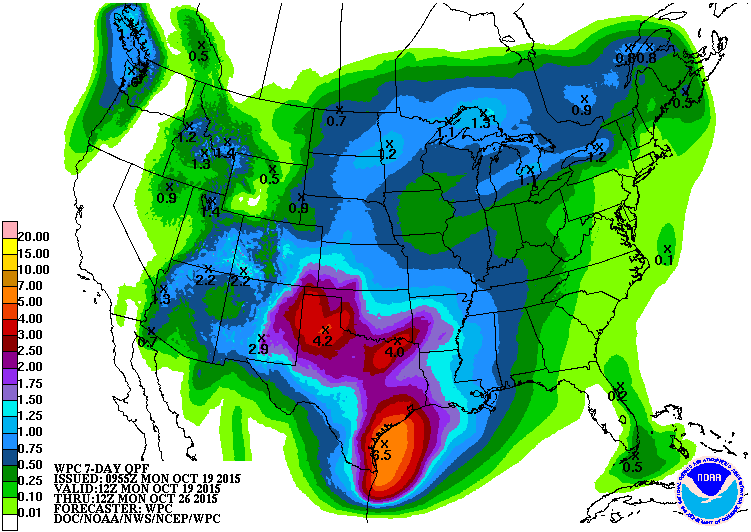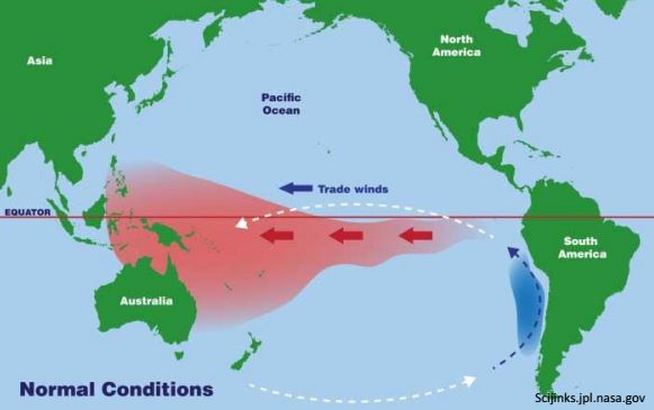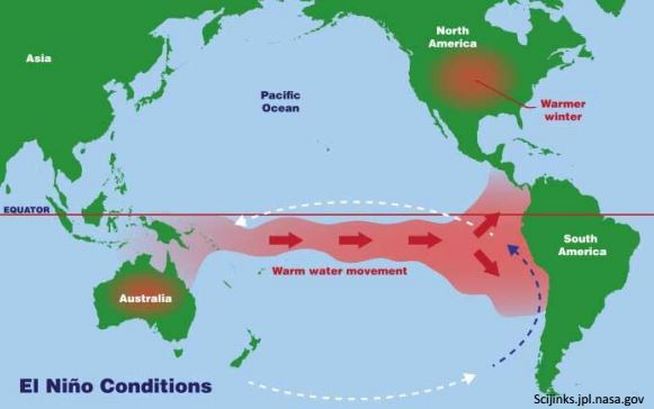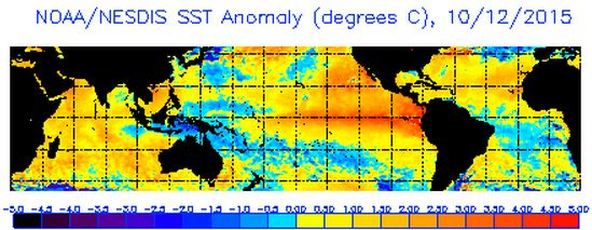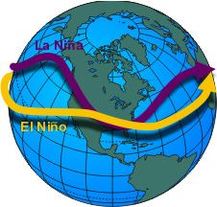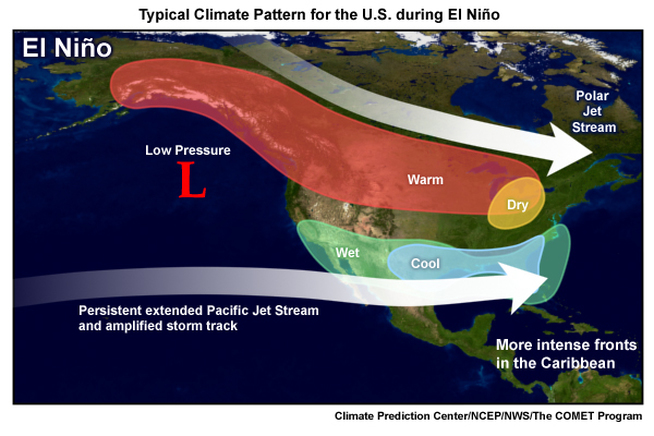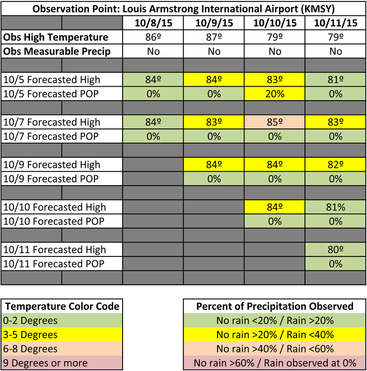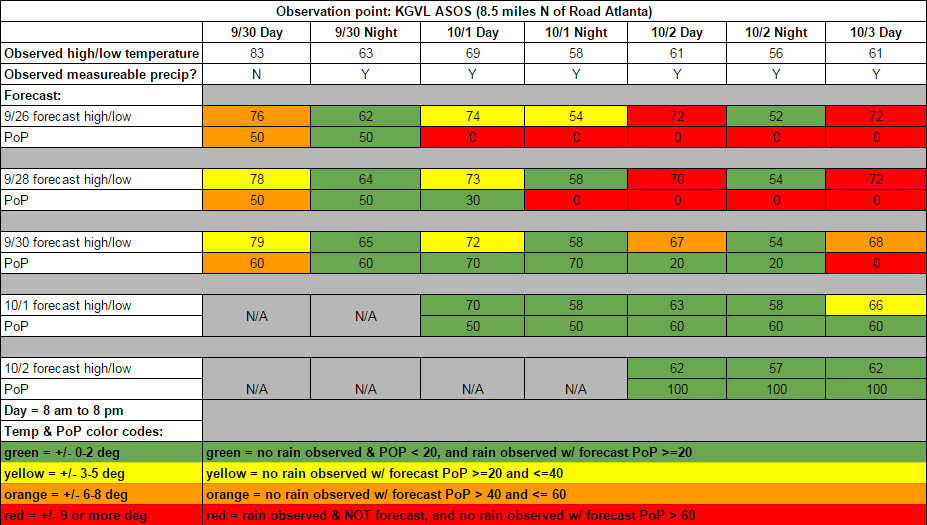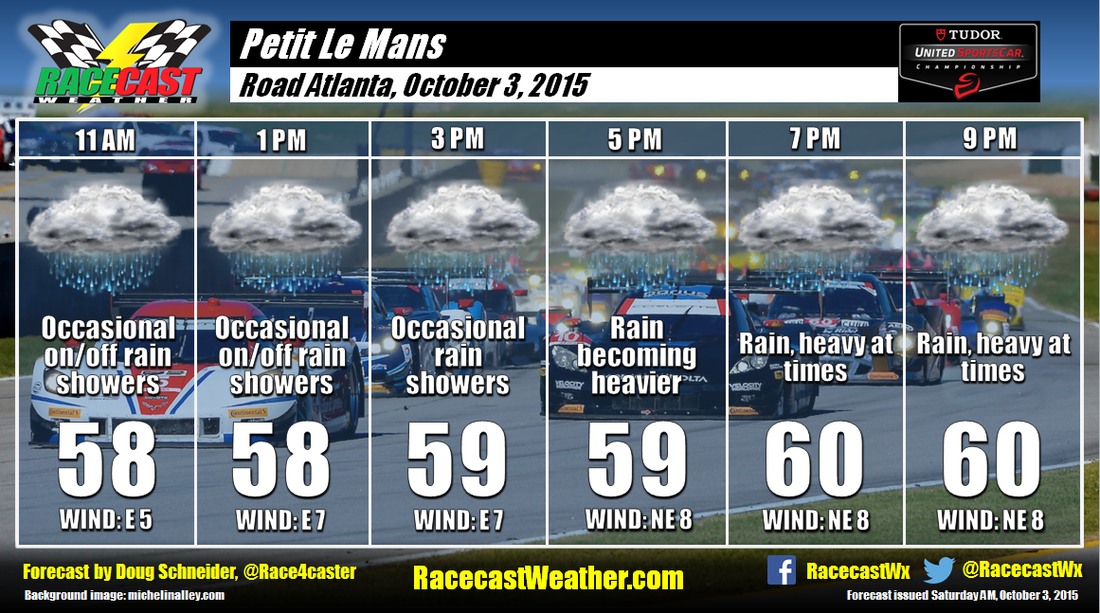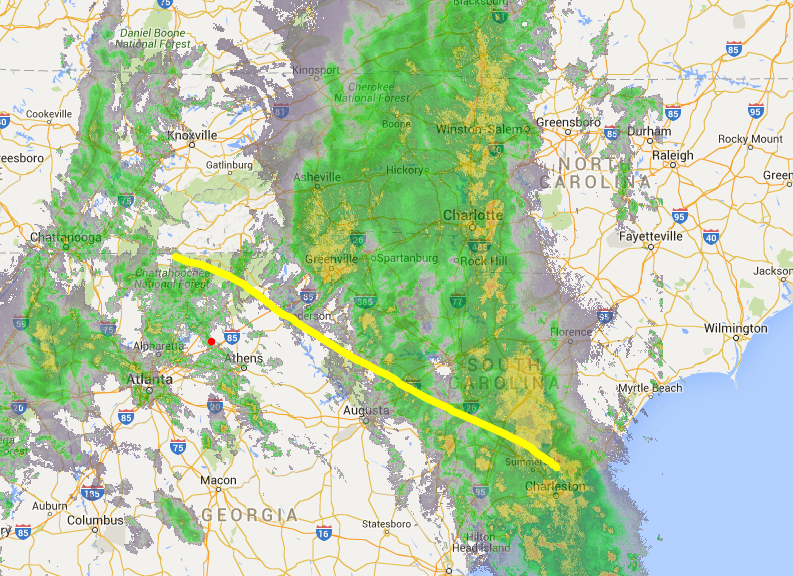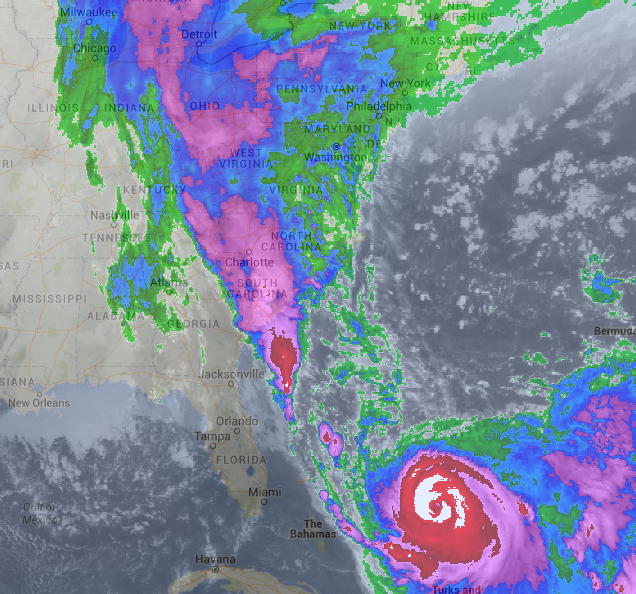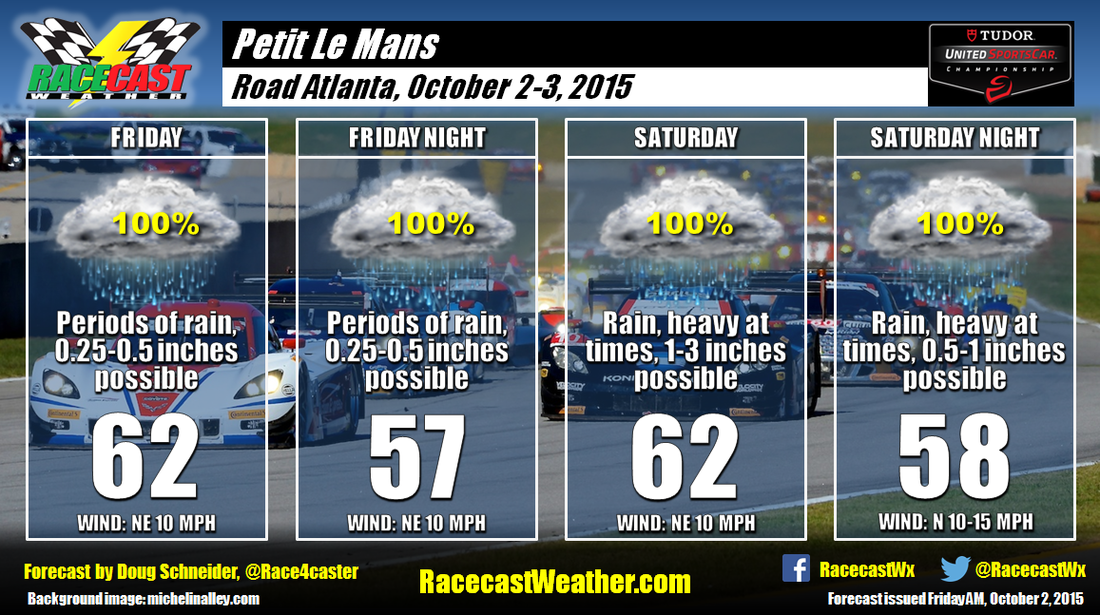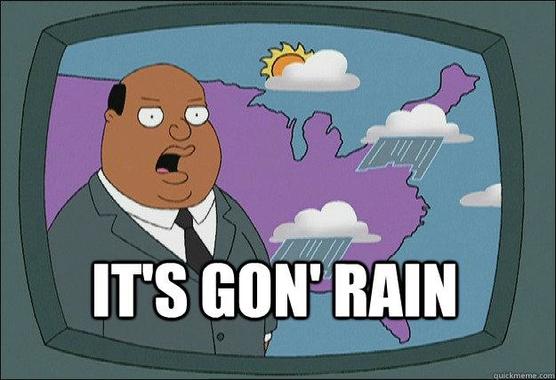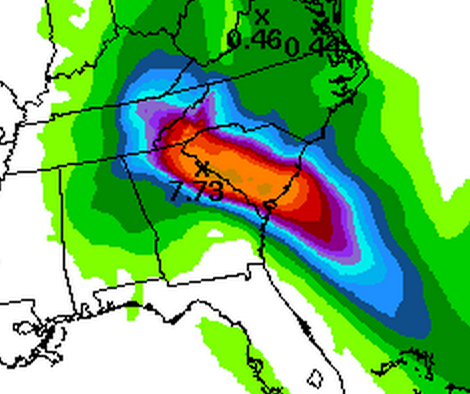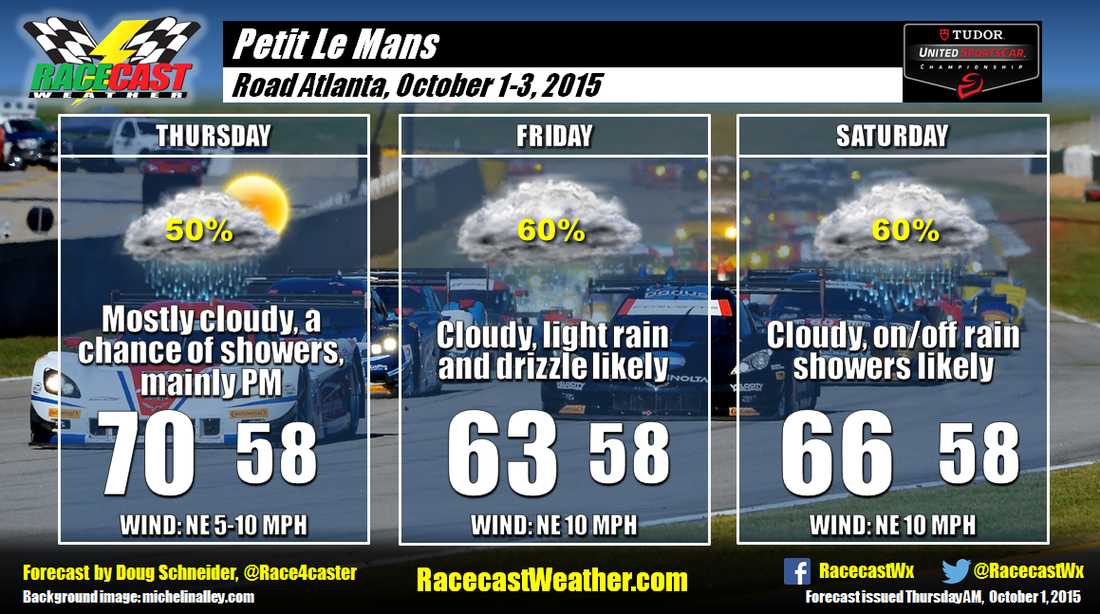On Friday, the majority of heavy rain and thunderstorms will be to the north of Austin, but it is still likely that some storms will hit the track Friday afternoon. There is a marginal threat of severe storms on Friday afternoon and evening, with large hail being the main threat, and strong wind gusts possible as well. With the front continuing to approach, the Circuit of the Americas will see a steady train of showers and thunderstorms on Saturday, many of which will produce heavy rain and flooding. Here is the latest map of forecast rainfall from the National Weather Service's Weather Prediction Center for Thursday afternoon through Sunday afternoon:
A Flash Flood Watch has been issued by the NWS for the Austin area from Friday morning through Sunday morning. Heavy rain will lead to flash flooding of roads, low lying areas, and creeks. If you're driving around Austin on Friday and especially Saturday, be careful. Never drive across a road that is flooded, and stay alert to any flash flood warnings that may be issued.
The big question is when will the rain end? There is still some disagreement among the models regarding the timing of this, but the majority seems to favor decreasing rain chances through Sunday morning as the trough and front move east of the area and drier air moves in behind them. The race is scheduled to start at 2 pm local time. It appears likely that the rain will end by this time, although I can't entirely rule out some showers affecting the race. I'd put the chance of a dry race around 70%.
Unfortunately, or usual live radar link will not be working this weekend. Here's a link to the NWS radar site, which includes any warnings that are issued.

